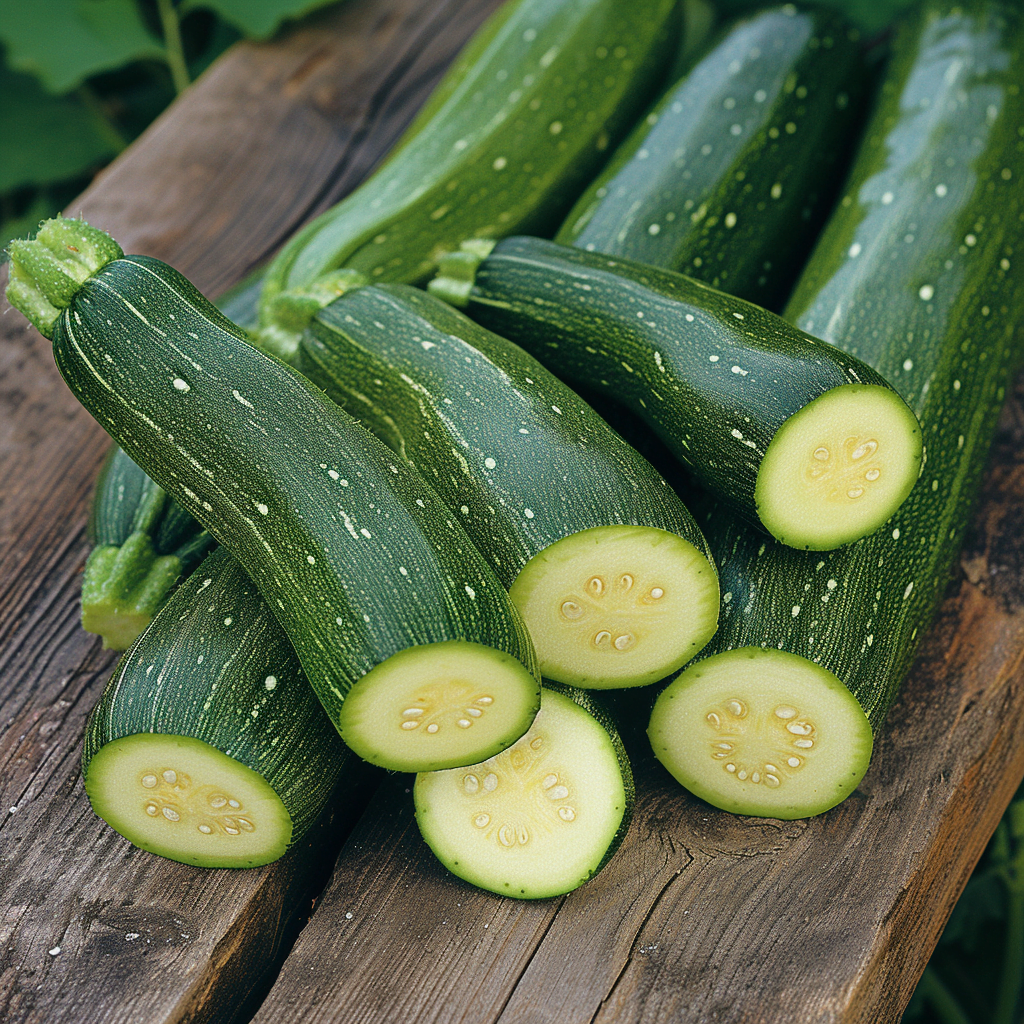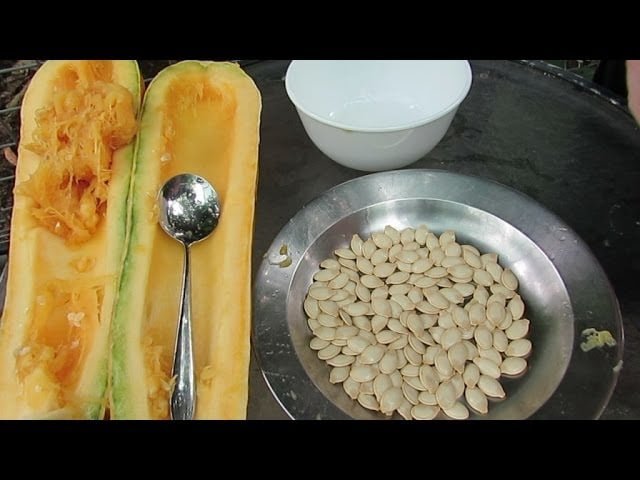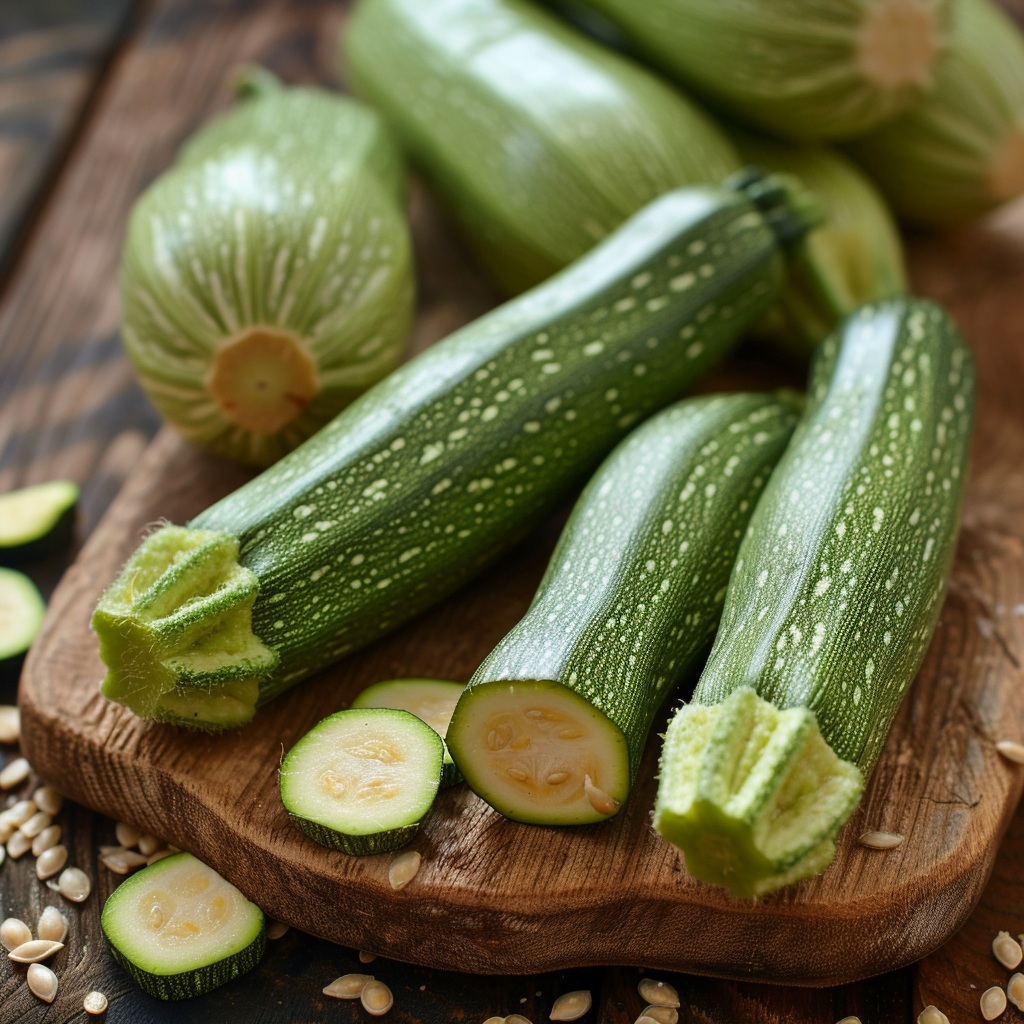If you’ve ever grown zucchini in your garden, you know just how abundant this summer squash can be. Besides enjoying the delicious taste of zucchini, did you know that you can also harvest and save the seeds for future planting? In this article “How To Get Zucchini Seeds From Zucchini”, you’ll learn the simple and rewarding process of how to harvest zucchini seeds, ensuring a continuous supply of this versatile vegetable year after year.
Whether you’re a seasoned gardener or a beginner, this guide will provide you with all the information you need to successfully collect zucchini seeds and add a touch of sustainability to your gardening practice. Get ready to unlock a whole new level of self-sufficiency and taste the satisfaction of growing your own zucchinis from seed.
Preparing the Zucchini
Choosing a mature zucchini
To ensure successful seed harvesting, it is essential to select a mature zucchini. Look for a zucchini that has reached its full size and has a firm, glossy skin. Avoid zucchinis that are soft or wrinkled, as these may not produce viable seeds.
Allowing the zucchini to overripen
Once you have chosen a mature zucchini, allow it to overripen on the vine. This means leaving the zucchini to grow beyond the stage when it is typically harvested for culinary use. Overripening allows the seeds inside the zucchini to fully mature, increasing the chances of successful seed extraction.
Harvesting the zucchini
When the zucchini has reached an overripe stage, it is ready to be harvested for seed extraction. Use a sharp knife or pair of scissors to cut the zucchini from its vine, leaving a short stem attached. Be careful not to damage the zucchini’s skin or seeds during the harvesting process.
Extracting Zucchini Seeds
Cutting the zucchini open
To extract the zucchini seeds, start by cutting the zucchini open lengthwise. Use a clean, sharp knife to make a clean, straight cut down the center of the zucchini. Ensure that the cut goes through the entire length of the zucchini.
Removing the seeds
Once the zucchini is cut open, use a spoon or your fingers to scoop out the seeds from the flesh. Be gentle when removing the seeds to avoid damaging them. Take care to remove any excess pulp or flesh attached to the seeds.
Separating the seeds from the pulp
After removing the seeds from the zucchini, place them in a clean bowl or container. You will notice that there is still some pulp attached to the seeds. Fill the bowl with water and gently swirl the seeds. The viable seeds will sink to the bottom, while any remaining pulp and debris will float to the surface. Carefully pour off the water, ensuring that you do not lose any viable seeds in the process.

Cleaning and Drying the Seeds
Rinsing the seeds
To properly clean the zucchini seeds, rinse them thoroughly under running water. Use a fine mesh sieve or cheesecloth to prevent the seeds from being washed away. Continue rinsing until the water runs clear, indicating that the seeds are free from any remaining pulp or debris.
Removing debris
After rinsing the seeds, inspect them carefully and remove any remaining debris or damaged seeds. It is important to only keep the highest quality seeds, as these will have the best chance of germinating successfully.
Drying the seeds
Properly drying the zucchini seeds is crucial for their long-term storage and viability. Spread the cleaned seeds in a single layer on a clean, dry surface such as a paper towel or a fine mesh screen. Place them in a well-ventilated area away from direct sunlight. Allow the seeds to air dry completely, which can take up to two weeks. Ensure that the seeds are fully dry before proceeding with storage.
Storage Options for Zucchini Seeds
Using a paper envelope
One simple and cost-effective method of storing zucchini seeds is to use a paper envelope. Place the dried seeds in the envelope, ensuring they are completely dry to prevent mold or rot. Label the envelope with the zucchini variety and the date of seed harvesting. Store the envelope in a cool, dark, and dry place until you are ready to sow the seeds.
Using a glass jar
Using a glass jar for seed storage provides additional protection against moisture and pests. Place the dried zucchini seeds in a clean, airtight glass jar. Seal the jar tightly and label it with the necessary information. Store the jar in a cool, dark location, such as a pantry or cellar, to maintain the seeds’ viability for an extended period.
Storing in a desiccant packet
For optimal long-term storage, consider using a desiccant packet in combination with your chosen storage method. Desiccant packets help absorb excess moisture, preventing mold or rot from compromising the seeds’ viability. Place a desiccant packet in the storage container alongside the zucchini seeds. Ensure the packet does not come into direct contact with the seeds to avoid any potential chemical transfer.

Sowing Zucchini Seeds
Choosing the right time for sowing
The timing of sowing zucchini seeds is crucial for successful germination and growth. Wait until the soil temperature has consistently reached at least 60°F (15°C) before sowing the seeds. Planting too early in colder temperatures can result in poor germination or stunted growth.
Preparing the soil
Before sowing your zucchini seeds, it is essential to prepare the soil. Choose a location with well-drained soil that receives ample sunlight. Remove any weeds or debris from the planting area. Incorporate organic matter, such as compost or well-rotted manure, into the soil to promote nutrient availability and moisture retention.
Sowing the seeds
Sow the zucchini seeds directly into the prepared soil, following the recommended spacing guidelines for the specific zucchini variety. Plant the seeds at a depth of approximately one inch (2.5 cm). After planting, gently water the soil, ensuring it remains consistently moist but not waterlogged. Continue to provide regular water throughout the germination and growing process.
Seed Viability and Germination
Determining seed viability
To assess the viability of your zucchini seeds before sowing, perform a simple germination test. Place a few seeds on a damp paper towel or in a shallow container filled with moist soil. Keep them in a warm location with consistent moisture. Check the seeds regularly over a 5-10 day period. If a high percentage of seeds germinate and produce healthy seedlings, it indicates good seed viability.
Testing seed germination
If you are unsure about the viability of a particular batch of zucchini seeds, you can conduct a more comprehensive germination test. Place a larger sample of seeds, such as 20 to 25, in a labeled container filled with moistened seed-starting mix. Keep the container in a warm, well-lit area and maintain consistent moisture. After a suitable period, typically around 7-10 days, count the number of seeds that have germinated to determine the germination rate.
Increasing germination success
To improve the chances of successful germination, consider scarifying the zucchini seeds before sowing. Scarification involves gently nicking or scraping the outer seed coat to enhance water absorption and speed up germination. You can use a small file, sandpaper, or even carefully using a sharp knife to scarify the seeds. Be cautious not to damage the inner seed, as this could inhibit germination.

Saving Seeds from Hybrid Zucchini
Understanding hybrid zucchini
Hybrid zucchinis are the result of cross-pollination between different zucchini varieties, resulting in offspring with specific desired traits. Saving seeds from hybrid zucchinis can be challenging because the offspring may not retain the desired characteristics of their parents.
Challenges of saving hybrid seeds
When saving seeds from hybrid zucchinis, the resulting plants may display a wide range of traits from both parent plants. This inconsistency makes it difficult to maintain the specific characteristics of the hybrid variety. In subsequent generations, the offspring may revert to resemble one of the parent plants or exhibit a mix of traits.
Isolating hybrid plants for seed saving
To save hybrid zucchini seeds, it is crucial to isolate the hybrid plants from other zucchini varieties to prevent cross-pollination. Use physical barriers such as netting or planting distance to ensure that only the desired hybrid plants receive pollen from their own flowers. This isolation will help maintain the integrity of the hybrid variety and increase the chances of producing similar offspring.
Tips for Successful Seed Harvesting
Choosing healthy zucchini plants
To increase the likelihood of obtaining healthy and viable zucchini seeds, choose plants that are disease-free and have strong, vigorous growth. Avoid selecting plants with signs of pest infestation or wilting foliage. Healthy plants are more likely to produce high-quality seeds.
Avoiding cross-pollination
Cross-pollination can occur between different zucchini varieties if they are planted too close together. To prevent cross-pollination, maintain a distance of at least 100 feet (30 meters) between different zucchini varieties. Alternatively, consider hand-pollinating zucchini flowers to ensure controlled pollination.
Labeling the seeds correctly
Properly labeling the zucchini seeds is crucial for future reference and organization. Use waterproof markers or adhesive labels to clearly identify the zucchini variety, the date of seed harvesting, and any relevant information such as hybrid status or specific traits. Accurate labeling ensures that you can differentiate between different seeds and allows you to choose the desired variety for sowing in subsequent seasons.

Common Mistakes to Avoid
Harvesting seeds from diseased plants
It is important to avoid harvesting zucchini seeds from diseased or compromised plants. Seeds obtained from diseased plants may carry the same pathogens, potentially leading to the transmission of diseases to future crops. Always choose healthy plants for seed harvesting to maintain the overall health of your zucchini plants.
Mixing up different zucchini varieties
Mixing up different zucchini varieties during the seed-saving process can lead to confusion and misidentification in subsequent growing seasons. To avoid this mistake, ensure that you harvest and store seeds from each zucchini variety separately. Clearly label and organize your seeds to prevent mix-ups and maintain accurate records.
Not allowing seeds to fully mature
To maximize the chances of successful seed germination, it is crucial to allow the zucchini seeds to fully mature before harvesting. Rushing the seed extraction process by harvesting immature seeds may result in poor germination rates and weak seedlings. Be patient and wait until the zucchini seeds have reached their full potential before proceeding with seed saving.
Benefits of Harvesting Your Own Zucchini Seeds
Cost savings
Harvesting your own zucchini seeds allows you to save money on purchasing new seeds each season. By reusing seeds from your own zucchinis, you eliminate the need to buy seeds and reduce gardening expenses.
Preserving heirloom varieties
Saving zucchini seeds allows gardeners to preserve heirloom varieties with unique characteristics and flavors. Heirloom zucchinis often possess historical significance and embody traditional gardening practices. By harvesting and saving seeds from heirloom zucchinis, you contribute to the preservation of these cherished varieties for future generations.
Developing self-sufficiency
Seed harvesting provides an opportunity for self-sufficiency in your gardening journey. By mastering the skill of seed saving, you become less reliant on external sources for your zucchini seeds. Developing self-sufficiency empowers you to have more control over your gardening practices and increases your ability to adapt to changing circumstances.
In conclusion, harvesting zucchini seeds is a rewarding process that allows you to save money, preserve heirloom varieties, and develop self-sufficiency in your gardening endeavors. By following the recommended steps for preparing the zucchini, extracting and cleaning the seeds, choosing proper storage options, and sowing and germinating the seeds, you can enjoy a successful seed-saving experience. Avoid common mistakes and take advantage of the benefits associated with harvesting your own zucchini seeds. Happy gardening!



